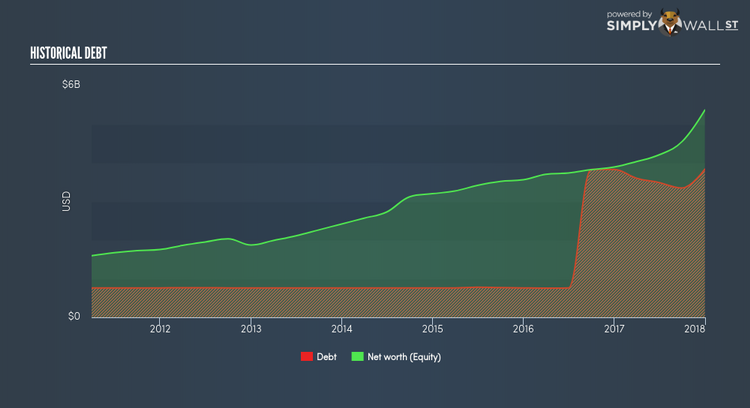Is Westlake Chemical Corporation’s (NYSE:WLK) Balance Sheet A Threat To Its Future?

Investors seeking to preserve capital in a volatile environment might consider large-cap stocks such as Westlake Chemical Corporation (NYSE:WLK) a safer option. Market participants who are conscious of risk tend to search for large firms, attracted by the prospect of varied revenue sources and strong returns on capital. However, its financial health remains the key to continued success. Today we will look at Westlake Chemical’s financial liquidity and debt levels, which are strong indicators for whether the company can weather economic downturns or fund strategic acquisitions for future growth. Note that this information is centred entirely on financial health and is a high-level overview, so I encourage you to look further into WLK here. See our latest analysis for Westlake Chemical
How much cash does WLK generate through its operations?
Over the past year, WLK has maintained its debt levels at around US$3.84B comprising of short- and long-term debt. At this current level of debt, the current cash and short-term investment levels stands at US$1.53B for investing into the business. Additionally, WLK has produced US$1.54B in operating cash flow in the last twelve months, leading to an operating cash to total debt ratio of 40.08%, meaning that WLK’s debt is appropriately covered by operating cash. This ratio can also be interpreted as a measure of efficiency as an alternative to return on assets. In WLK’s case, it is able to generate 0.4x cash from its debt capital.
Can WLK meet its short-term obligations with the cash in hand?
Looking at WLK’s most recent US$1.97B liabilities, it seems that the business has maintained a safe level of current assets to meet its obligations, with the current ratio last standing at 1.76x. Generally, for Chemicals companies, this is a reasonable ratio since there’s sufficient cash cushion without leaving too much capital idle or in low-earning investments.
Does WLK face the risk of succumbing to its debt-load?
With a debt-to-equity ratio of 71.47%, WLK can be considered as an above-average leveraged company. This is not unusual for large-caps since debt tends to be less expensive than equity because interest payments are tax deductible. Since large-caps are seen as safer than their smaller constituents, they tend to enjoy lower cost of capital. No matter how high the company’s debt, if it can easily cover the interest payments, it’s considered to be efficient with its use of excess leverage. A company generating earnings after interest and tax at least three times its net interest payments is considered financially sound. For WLK, the ratio of 8.25x suggests that interest is well-covered. High interest coverage serves as an indication of the safety of a company, which highlights why many large organisations like WLK are considered a risk-averse investment.
Next Steps:
Although WLK’s debt level is towards the higher end of the spectrum, its cash flow coverage seems adequate to meet obligations which means its debt is being efficiently utilised. This may mean this is an optimal capital structure for the business, given that it is also meeting its short-term commitment. I admit this is a fairly basic analysis for WLK’s financial health. Other important fundamentals need to be considered alongside. I suggest you continue to research Westlake Chemical to get a more holistic view of the large-cap by looking at:
Future Outlook: What are well-informed industry analysts predicting for WLK’s future growth? Take a look at our free research report of analyst consensus for WLK’s outlook.
Valuation: What is WLK worth today? Is the stock undervalued, even when its growth outlook is factored into its intrinsic value? The intrinsic value infographic in our free research report helps visualize whether WLK is currently mispriced by the market.
Other High-Performing Stocks: Are there other stocks that provide better prospects with proven track records? Explore our free list of these great stocks here.
To help readers see pass the short term volatility of the financial market, we aim to bring you a long-term focused research analysis purely driven by fundamental data. Note that our analysis does not factor in the latest price sensitive company announcements.
The author is an independent contributor and at the time of publication had no position in the stocks mentioned.

